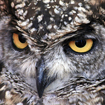Teaching Practice 4b
Elementary B1 level
Description
Materials
Main Aims
-
To teach negative and question forms of present simple tense in the context. To further build it up with wh-questions using the present simple tense.
Subsidiary Aims
-
to integrate other skills like listening, writing and speaking.
Procedure (30 minutes)
First, T will have a gentle talk with students asking about their life. Then T will ask about their fathers using the questions in present simple tense. For example, "What does your father do? Does he have a job? Does he play any games?" In the mean time I will write some key vocabulary and this structure on the board. This will give students a visual advantage. After this warm up, lead -in will enter its second stage. T will shows students a picture and daily routine of a Turkish young doctor with short description of his likes and dislikes. After reading, Ss will write down he likes and doesn't like. This will give students warm of practicing present simple with focus on doesn't. Now they are ready to be introduced with the TL.
At this stage, (after the lead-in) SS will be given a paragraph about Mark's life and interests. They will be required of read and underline and take out what Mark likes and what he doesn't like. This is in fact the continuation of the previous activity that they did with name of a Turkish doctor. The following CCQs will help them better understand the text. 1. Is a young man? (yes) 2. Does he teach? (yes) 3. Does he don't like more things? (no) 4. Does he have a lot of hobbies? (yes) These CCQ and other practice will make the text easy to approach at and finish the exercise. After this, Ss will be presented directly 4 questions and answers. They will be asked (as a class) to read the questions and match them with their answers. This will give them an idea of questions and their grammatical constructions. This will lead them to a full fledge question of matching questions with answers.
At this stage, SS will be introduced a bit difficult stage of using question (DO / DOES) in present simple. To practice this SS will be made to stand in two lines facing pairs. They will be given a handout with topic and "Father", "Mother" with their daily routines and hobbies. The facing student will look at the page and ask his facing partner questions about his father and mother like, "Does he go for a walk? Does she cook in the kitchen?" the facing partner will answer these questions with either positive or negative, "yes, he does" or "No, he doesn't". The pairs will reshuffle and each new pair will ask the same questions and get the answers. This activity will give them enough practice to practice simple question of the present simple. By this time, teacher will write the form of this grammatical point and it will made sure that SS know the difference between the use of "Do" or "Does" in questions and they can answers also.
The last part of the TL is practicing and reproducing wh-questions. They were touched in the previous activities but their form was not given. Form: what / does / she / play / in the evening? question word / Auxiliary / subject / Infinitive After the introduction of for, T will give them some example on the WB. After that an activity will be handed out and students will make wh-questions using the table. This will give them the practice of wg-questions that has been made controlled. This will give them writing practice. They will work in pairs to complete this activity. The last stage is the reproduction stage. Students will reproduce what they have learned before. Two activities have bee devise to test this stage. In the first activity they will work in pairs and rearranged the jumbled sentences to make wh-questions. This activity will serve two purposes. (1) give them chance to produce the structure they learnt before. (2) to practice writing and cognitive skills. The last activity has been set as free activity. At this stage, T assumes that they have mastered the structure and they don't need controlled practice. They have been given answers, they are required to write appropriate wh-question for each answer. They will work in group of three to figure out this.

